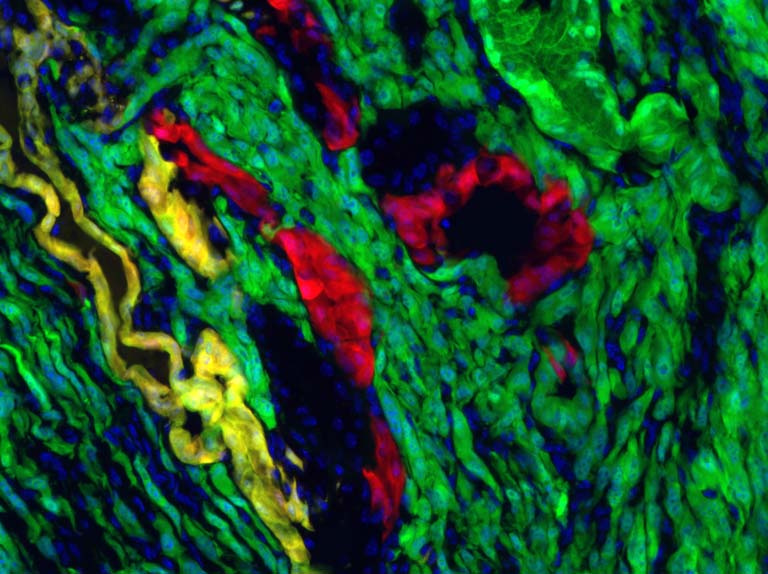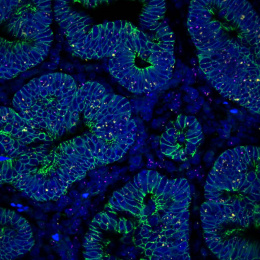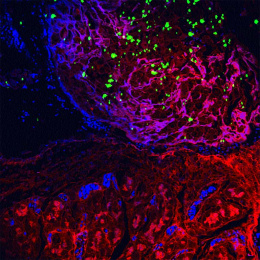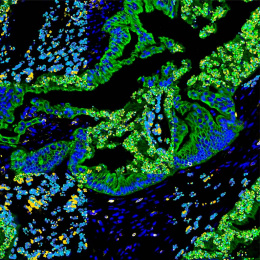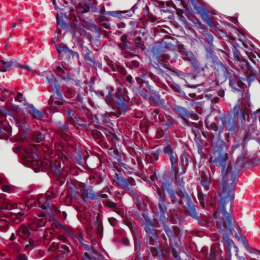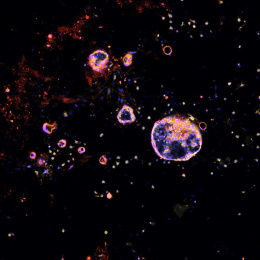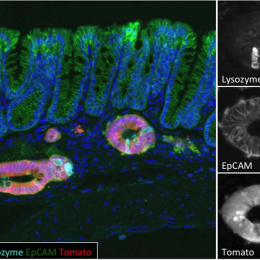Late-Stage Tumor Development in the Pancreas
Late-Stage Tumor Development in the Pancreas
Submitted by Mandar Deepak Muzumdar of the Jacks Laboratory at the Koch Institute
Koch Institute at MIT, MIT Department of Biology
In the laboratory, we are able to model pancreatic cancer tumor development by labeling pancreatic cells with complete mutation (green), incomplete mutation (yellow), or no mutation (red) of the tumor suppressor gene (a “brake” that limits cancer growth/development) p53, the most commonly mutated gene in all of cancer.
By tracking the green cells that eventually become tumors, we can identify the origins of pancreatic cancer development and the behavior of these cells during the tumor formation process. Cells with complete loss of p53 grow wildly and take over the tumor, often engulfing their counterparts that retain p53. This image shows these cells in early-stage tumors. See what they look like in normal pancreatic tissue here and late-stage tumor development here.
